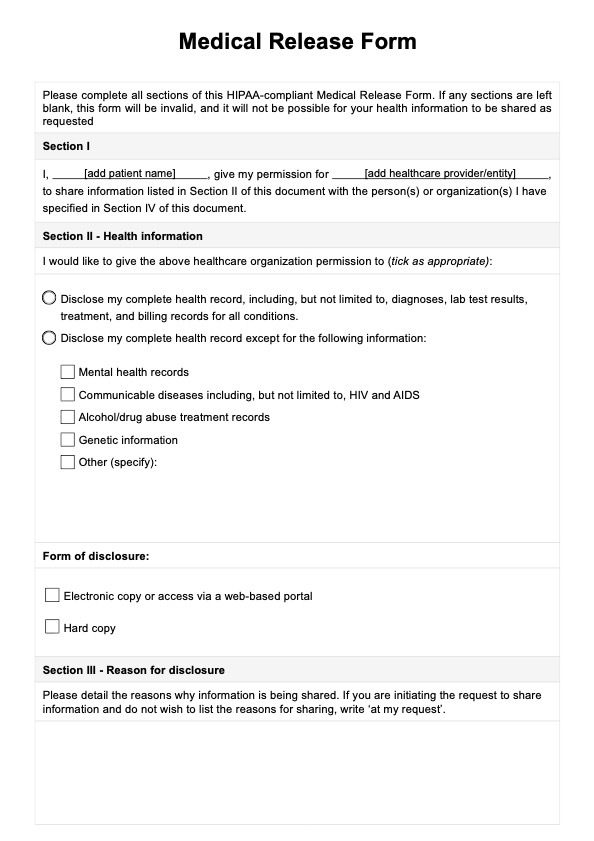A patient's medical records are confidential and vital to healthcare functions. Individuals violating HIPAA regulations can face fines, jail time, and lawsuits.

Provide patients with a helpful Medical Release Form template to facilitate sharing their medical information for different purposes.
A patient's medical records are confidential and vital to healthcare functions. Individuals violating HIPAA regulations can face fines, jail time, and lawsuits.
If a minor requires medical treatment while their parents are traveling, the form is necessary to authorize the release of their medical records to the treating healthcare provider. The parents or legally authorized personal representative can complete and sign the form in advance and provide a copy to the child's caretaker. The form should include the name and contact information of the designated caretaker, as well as the travel dates.
Medical Release Forms can be obtained from healthcare providers or entities, such as hospitals, clinics, and doctor's offices. Ensuring that the form complies with HIPAA regulations and includes all necessary fields and information to authorize the release of protected medical information is crucial.
EHR and practice management software
*No credit card required
Free
$0/usd
Unlimited clients
Telehealth
1GB of storage
Client portal text
Automated billing and online payments